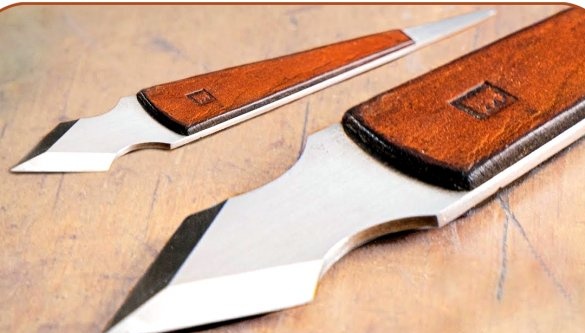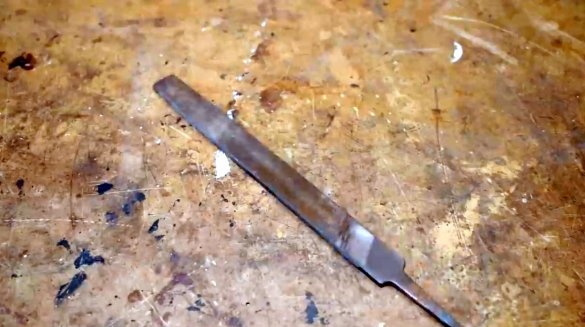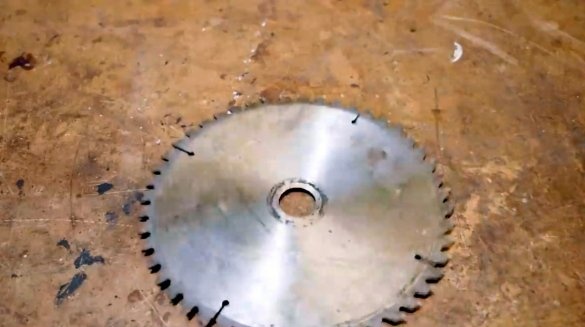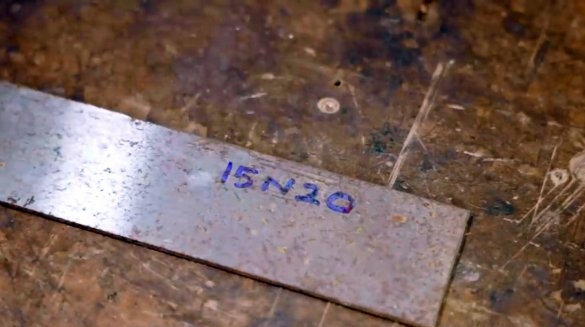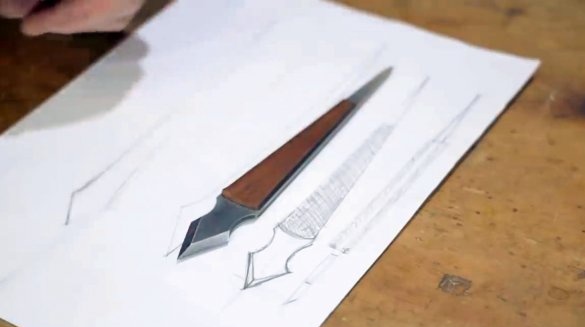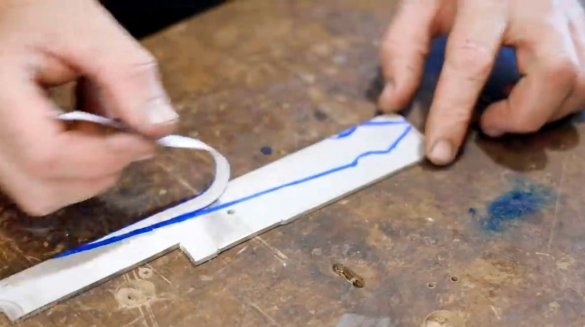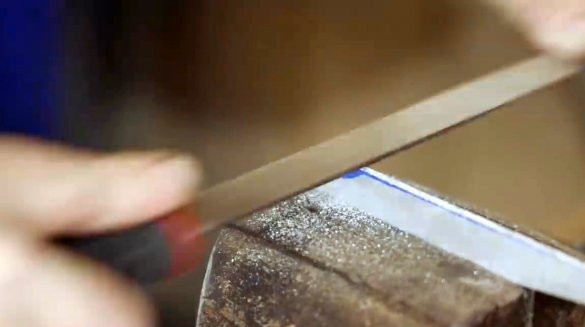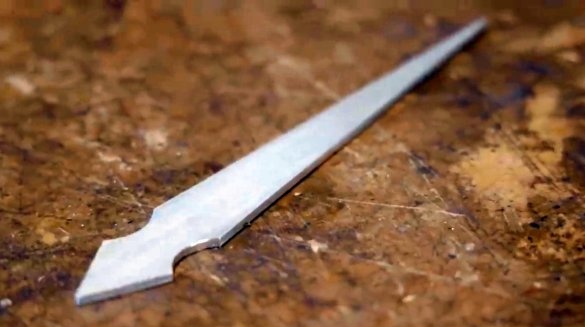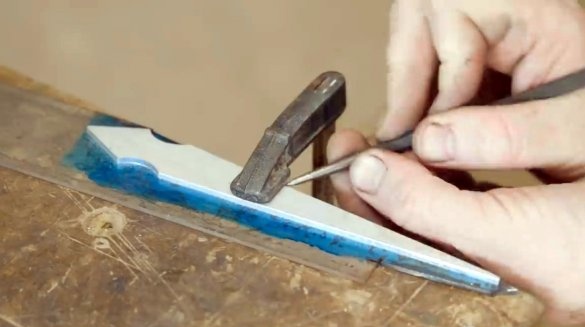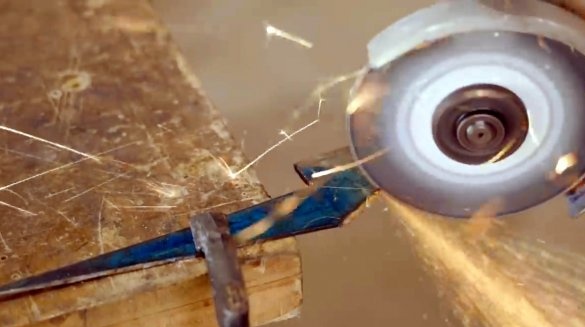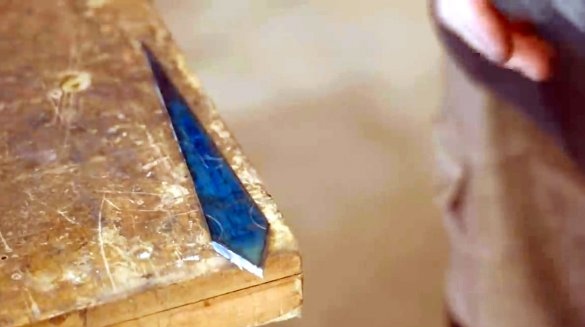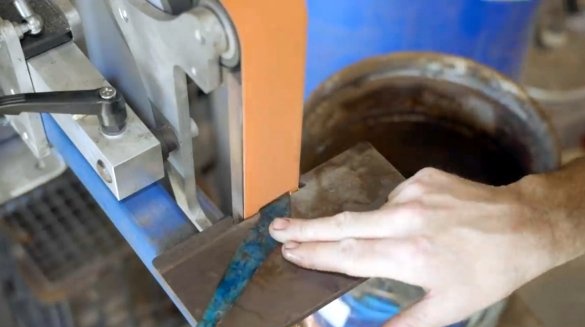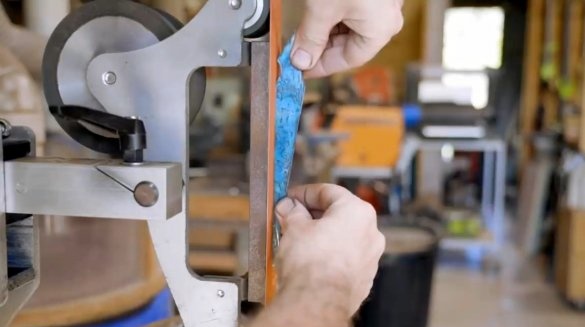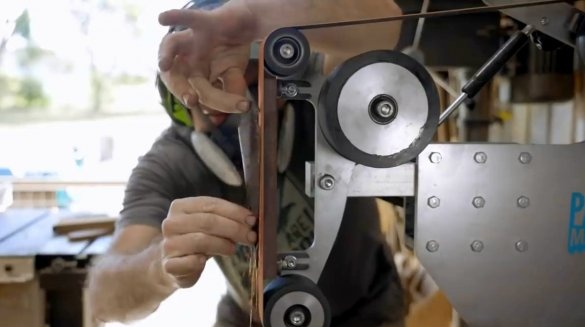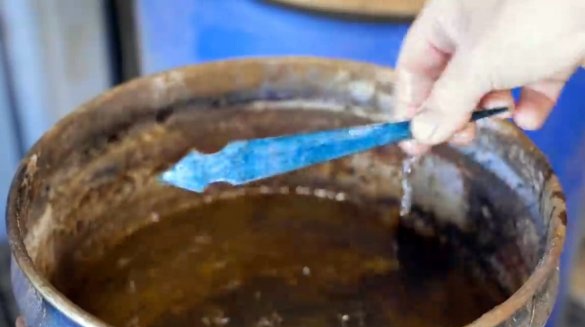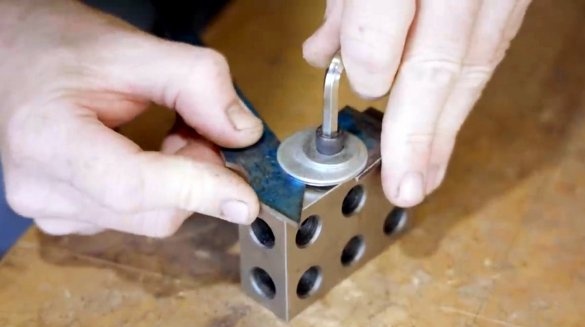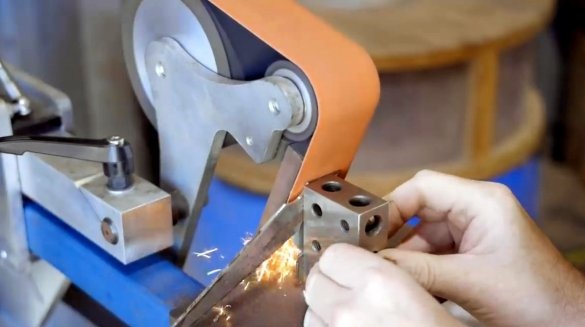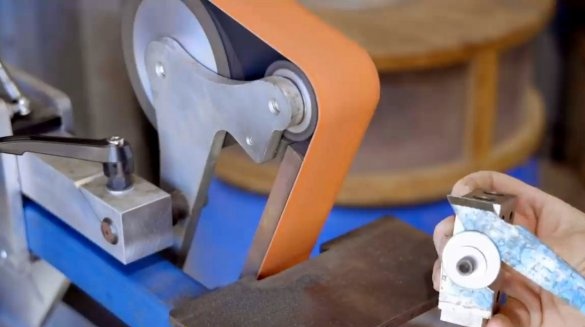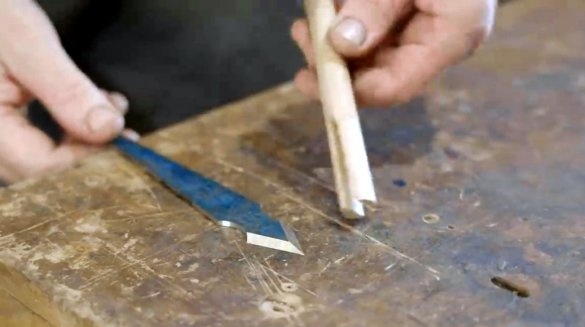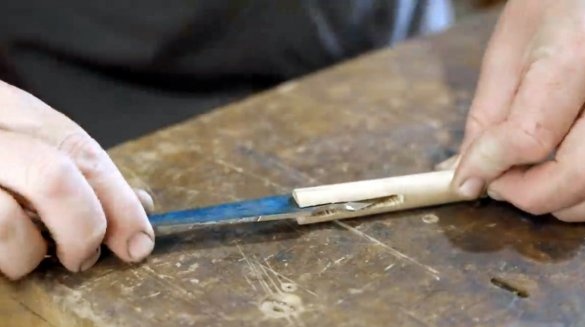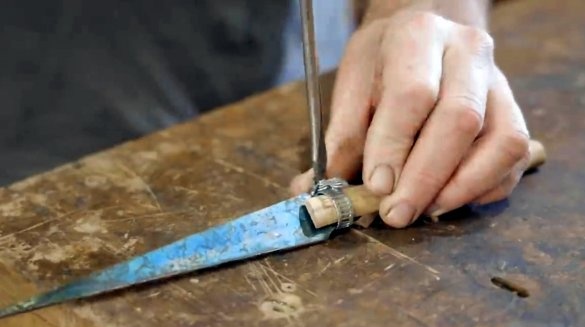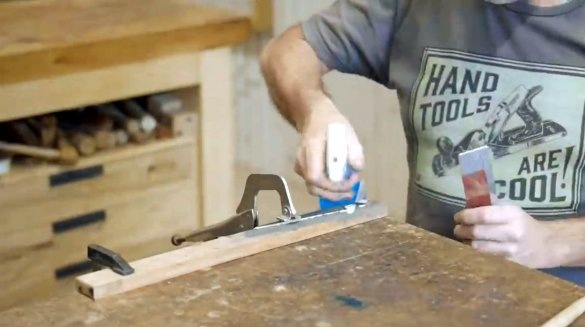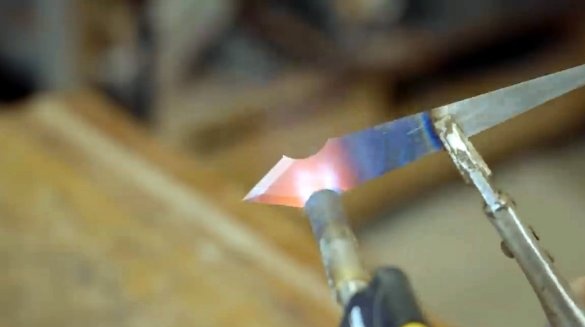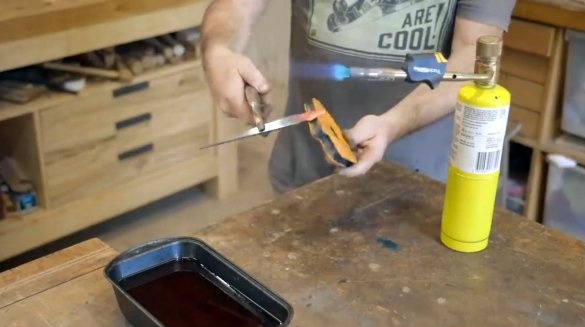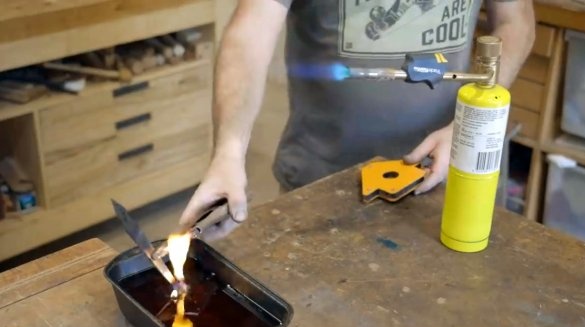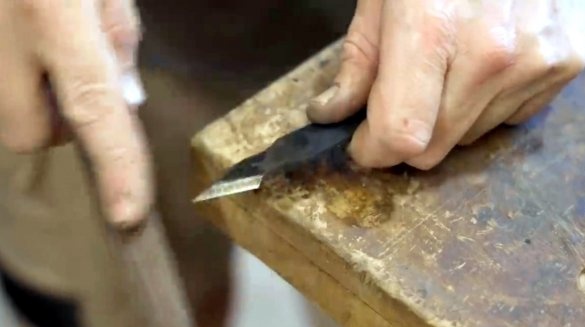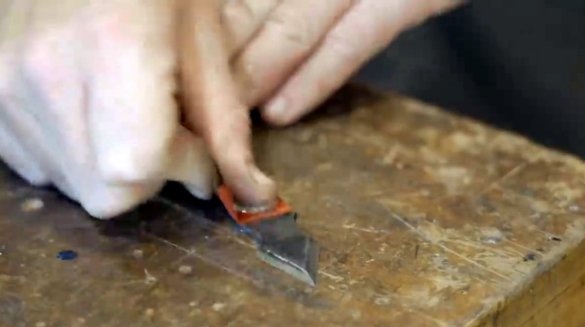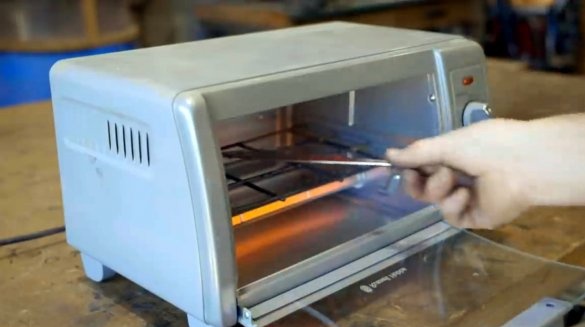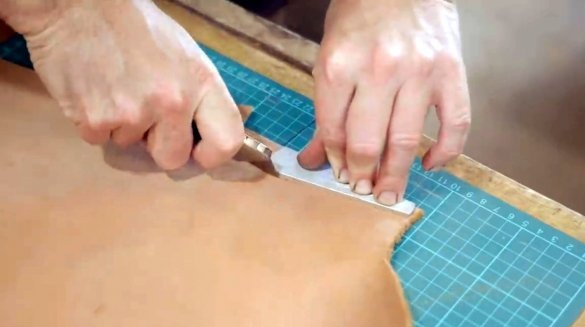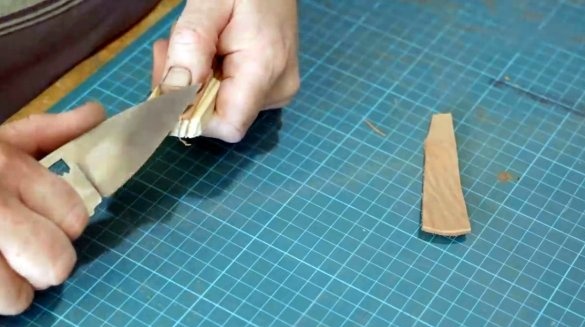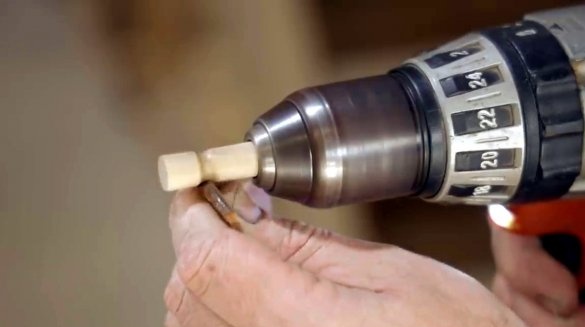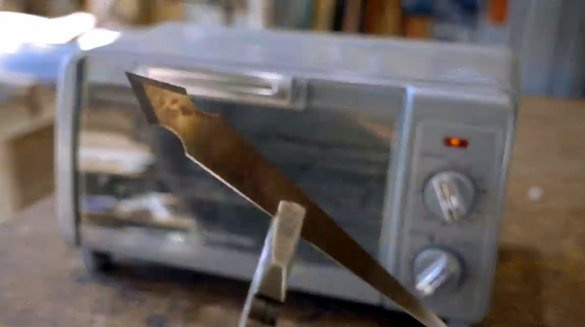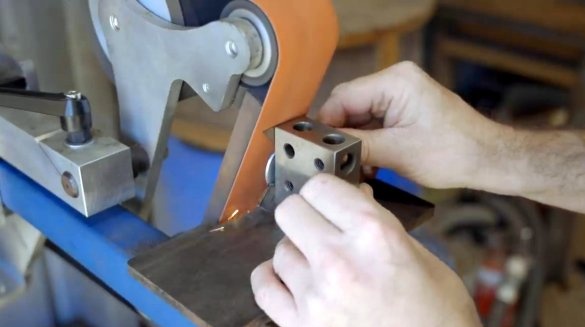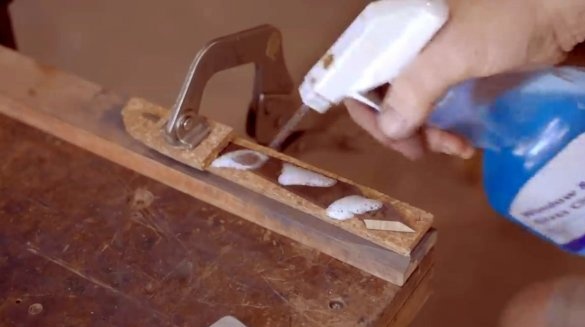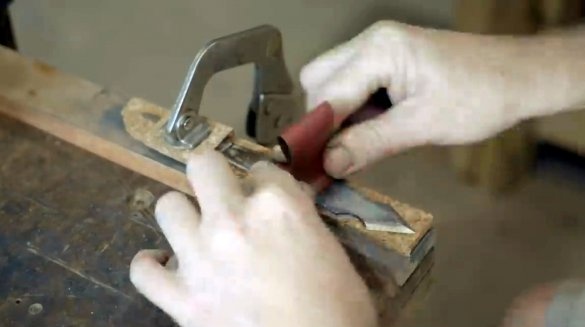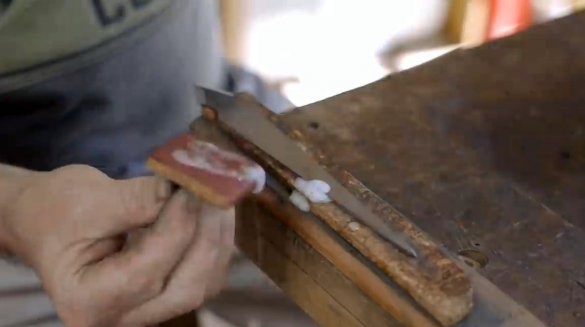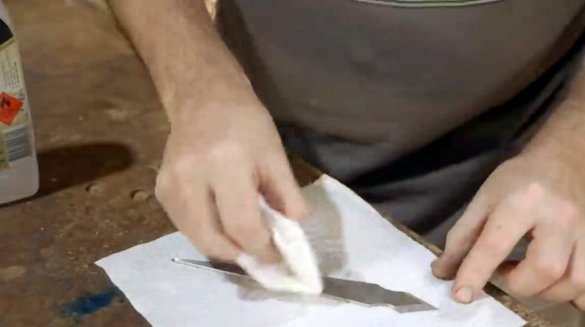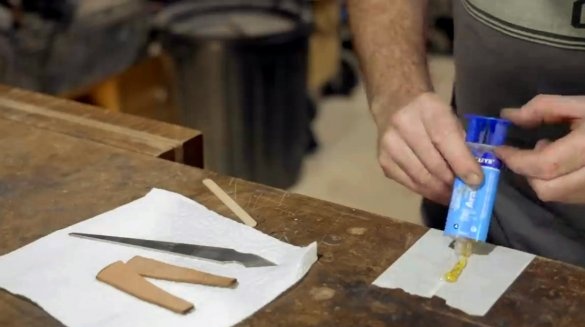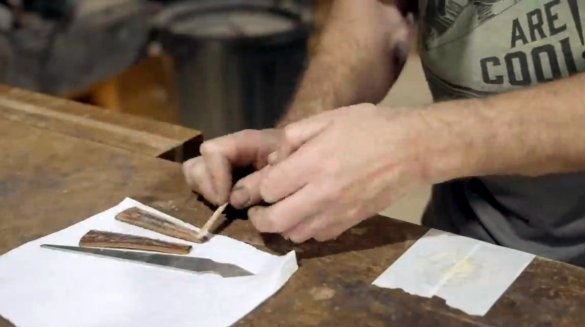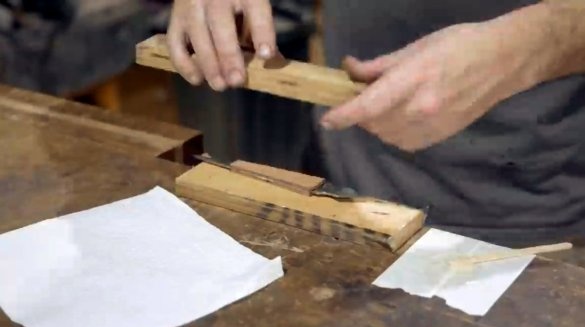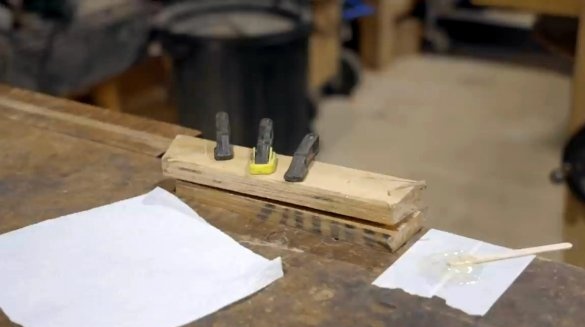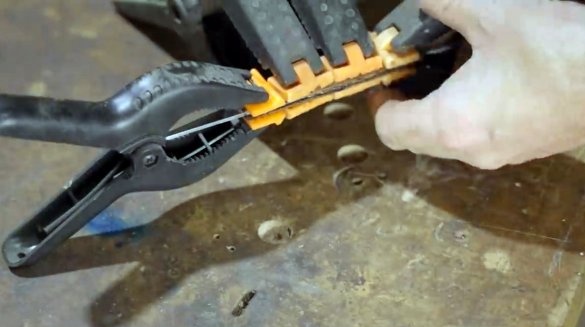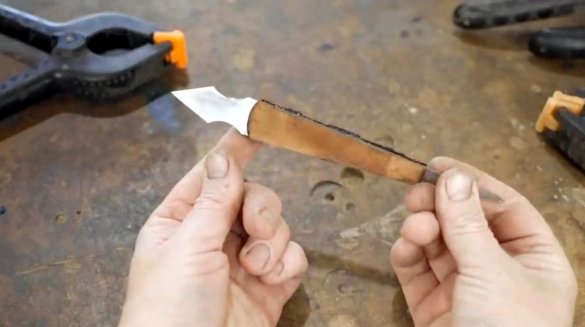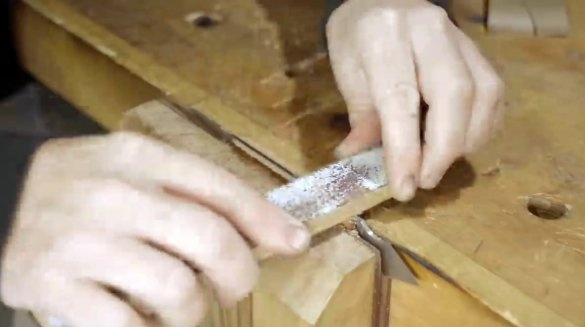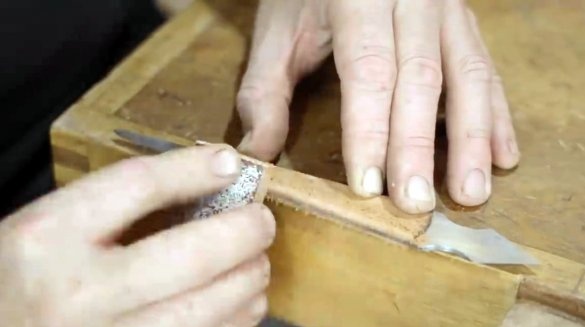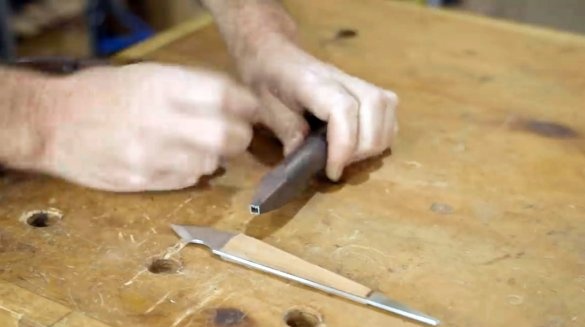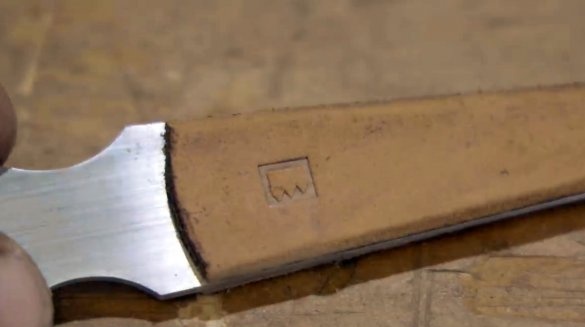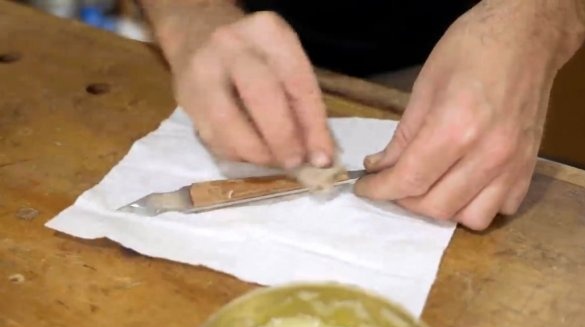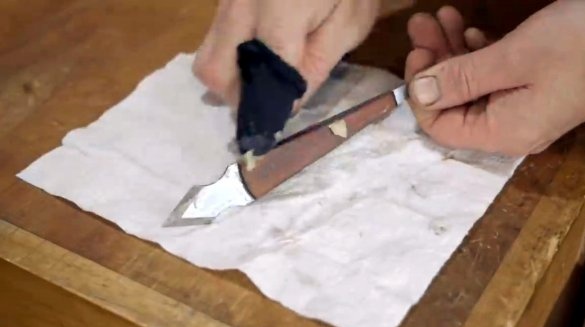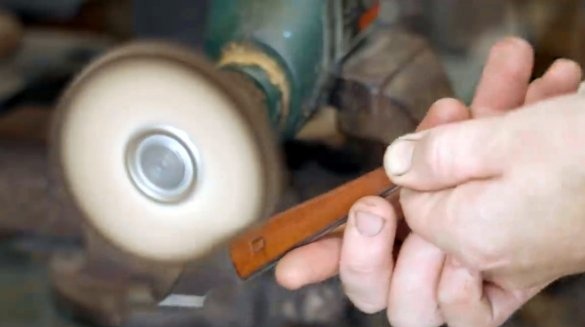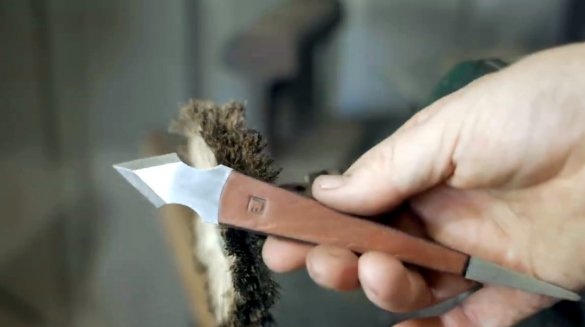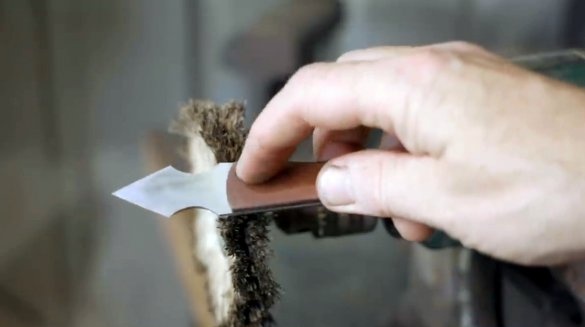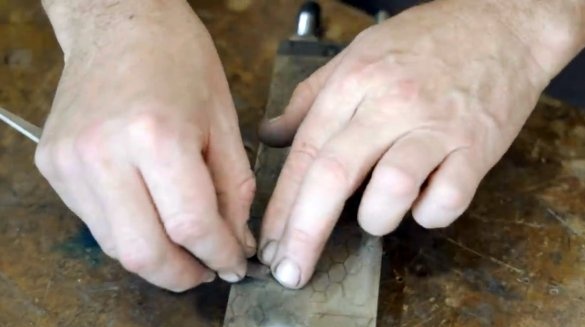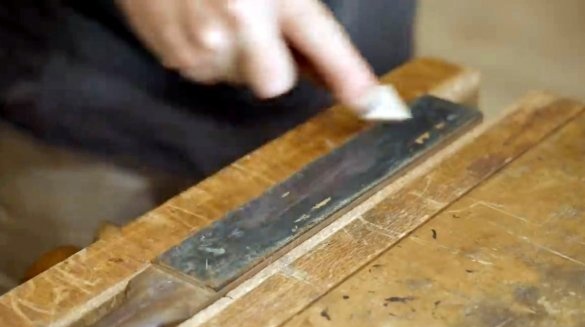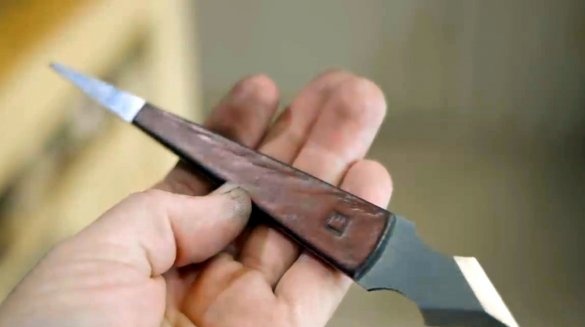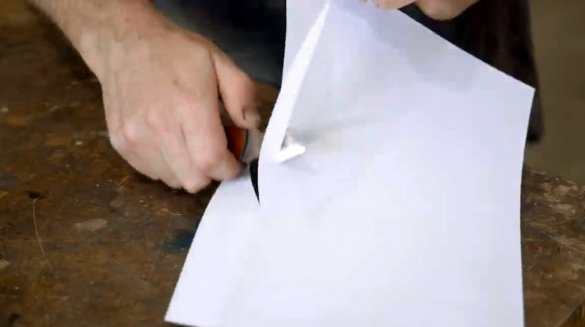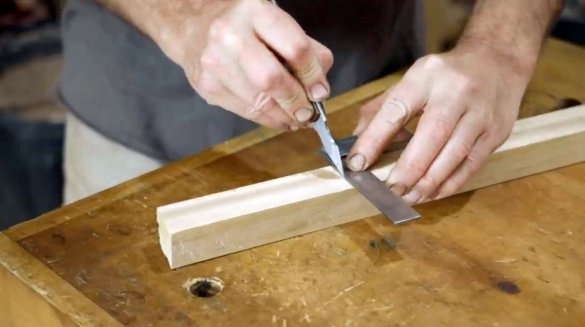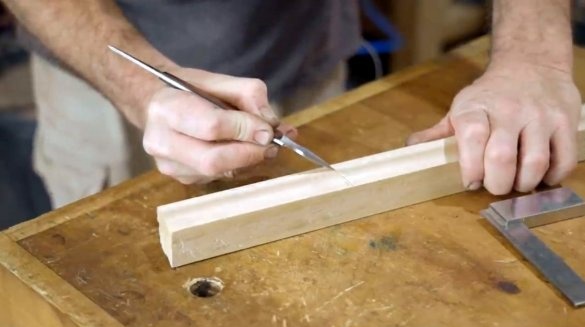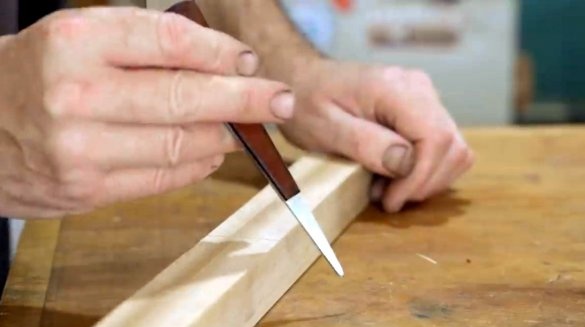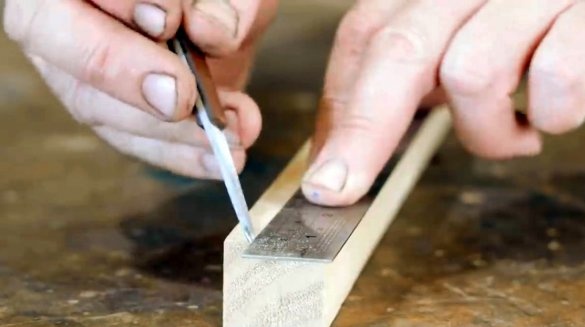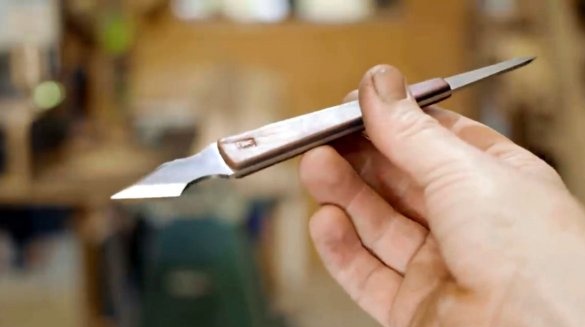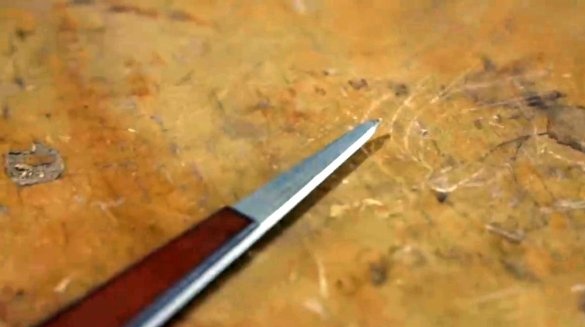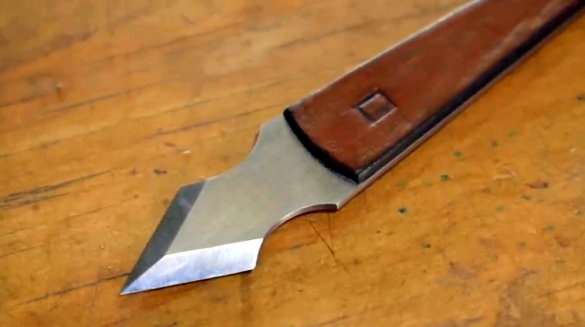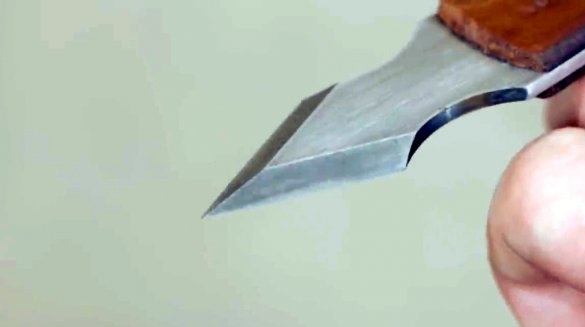In this article, you will learn from Steve, the author of YouTube channel “Pask Makes” about the technology of making a marking knife.
The whole process is quite simple, and will take no more than a couple of hours, and the result will please you.
Materials
- Sheet aluminum
- High carbon steel 15N20
- Steel clamps
- Leather strip
—
—
- paint
- Glass cleaning fluid
- Acetone
- Wax
- Vegetable oil
- Sandpaper.
Instruments, used by the author.
—
—
—
—
- Belt sander
—
—
- Gas or electric oven
- Grinding machine, polishing disc
—
- Vise, file, screwdriver, knife.
Manufacturing process.
For the knife blade itself you will need a piece of high-carbon steel, which is to be hardened, an old file, a circular saw blade, a saw blade from an electric jigsaw.
So, the master uses a piece of steel strip 15N20, which is ideal for the project in thickness.
Here is an original sketch from which the author takes a paper template.
Then he hastily makes an exact copy of the template, but already from an aluminum strip in case he needs to repeat the whole process.
The marked plate is fixed with a clamp to the workbench, and is cut with a hacksaw.
In order for the marking to be clearly visible, the steel strip is painted with acrylic paint.
The master applies the template to the steel plate, presses it with a clamp to the table, and with the help of an awl carefully transfers the outline of the template to the surface of the plate.
Then he cuts the shape of the future knife with a grinder with a diamond disk on metal.
Mashing and smoothing sharp edges on the grinding machine, sometimes wetting the workpiece with water. Also makes semicircular indentations for the fingers.
Now replaces the table, and the Lena feed system. Aligns rounding.
It's time to move on to the preliminary formation of cutting edges. Steve clamps the workpiece in a special block.
Then exposes the belt of the grinding machine at an angle of 60 degrees relative to the surface of the table.
Then he presses the workpiece to the tape and begins sharpening. On each edge of the cutting edge of the blade, the master leaves about half a millimeter of stock, which will allow to avoid unwanted cracks when the craftsman proceeds to heat treatment of the metal.
Further, the author puts the workpiece with the sharpened side into a specially made cutout in a wooden round timber, fixes it with a clamp.
Clamps the second edge of the round in the chuck of a screwdriver and grinds the second end of the workpiece on a grinding machine. In such a simple manner, he forms a cone-shaped cutter on it, like an awl.
After that, the workpiece is pressed by the grip grip to the table, and performs manual grinding using a glass cleaning liquid and sandpaper. This advice is worth adopting, since the composition of these fluids improves glide, and better captures the resulting fine steel dust.
To harden steel, you do not need any special tricks. A normal gas burner is sufficient. The main thing is to direct the heat of the flame from the blade itself, heating the body of the workpiece. If you heat the edges themselves, they will overheat too much!
At the same time, the master does not heat the steel too much, only to cherry red. Then he checks it with a magnet. As soon as the edge of the workpiece is no longer magnetized, it quenches the product in vegetable oil.
Then in the same way he tempers the second knife cutter. From this temperature, the oil even ignites.
After all, a little edge trimming with a file and sandpaper.
Now the master places the workpiece in the furnace and releases steel at a temperature of 2100C for two hours.
While the vacation process is ongoing, the author cuts out pieces of leather for the handle of the knife. He also cut off the excess template, and cuts a piece of leather on it so that there is a millimeter margin on each side. Later it will cut off exactly in shape when it sticks the skin on the surface of the knife itself.
It is important to finish processing the edges of the skin before it is glued to the handle. He first cleans them with a knife,
and then cauterizes the edges on the wooden round timber, slightly wetting the edges with water.
Then Steve takes the blade out of the furnace and begins its processing on a grinding machine. To prevent the blade from overheating, the master reduces the speed of the belt of the grinder to 25.50 meters per minute.
And at the same time he does not forget to regularly cool the part in ice water.
Before pasting the workpiece, Steve polishes it with sandpaper, wetting the surface.
The places where pieces of skin will be glued are degreased with acetone.
The author applies epoxy glue to stick the skin to the handle of a knife. Before, he used instantly hardening resin for this purpose. But high-strength epoxy will be involved in this project. The product is left to dry all night. Compresses the product with maximum clamp force between two planks.
So that there are no traces of the roughness of the wood on the skin, presses with clips.
Then you can trim its shape, cut off excess material, and grind the edges.
The author puts a personal logo on the product and covers the handle of the knife with several layers of wax.
Polishes the surface between the application of the next layer. So the wax is heated and absorbed into the skin.
Next is the sharpening and aiming of the blade on the water stone.
Here's how this knife cuts paper.
Tests of the main blade on a wooden bar.
For marking along the fibers, it is convenient to use a second cutter.
Here's a stylish knife for the workshop turned out.
I thank the author for the interesting idea of making a double-sided knife!
All good mood, good luck, and interesting ideas!
Author video can be found here.

